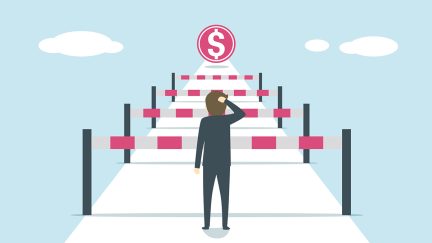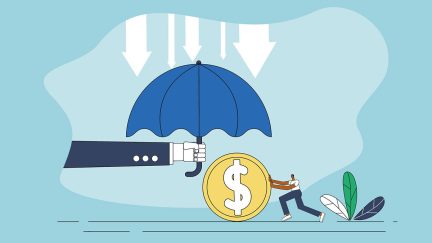Never miss a story — sign up for PLANSPONSOR newsletters to keep up on the latest retirement plan benefits news.
Social Security Burdens Fall on Younger Workers
As unemployment rises and employees retire sooner, experts say Social Security will be exhausted faster than predicted.
When Social Security was designed during the Great Depression, there were more than 45 employees to fund benefits for one retiree. There were few beneficiaries and many employees, but, in 2020, that ratio has dropped to roughly three to one.
Doubts in the long-term viability of Social Security have risen in past years, long before COVID-19 spun the economy into an unprecedented downturn. Pre-pandemic, the Social Security Trustees Report showed the combined asset reserves of the Old-Age and Survivors Insurance and Disability Insurance (OASI and DI) are projected to be depleted in 2035, with 79% of benefits payable. Now, as unemployment numbers rise to all-time highs and more employees are retiring sooner, experts say Social Security will be exhausted at a quicker pace.
“Think about the loss of income to fund Social Security,” says Philip Palumbo, founder, CEO and chief investment officer (CIO) for Palumbo Wealth Management. “You’ve seen a lot of people retire sooner than they were before, which also takes people offline in terms of earned income, which takes away from Social Security systems.”
According to the Penn Wharton Budget Model, a tool from the University of Pennsylvania that measures the economic impact of national budget policies, Social Security is expected to run out of reserves two to four years earlier than its last projection. Todd Soltow, co-founder of Frontier Wealth Management, says he believes fewer interest earnings and less purchasing power caused by the pandemic have led to this shorter timeline. A reduction by the Federal Reserve in current interest rates will directly lower the amount of earnings on existing reserves, he says, and a reduced demand for consumer goods and services may disturb the Consumer Price Index (CPI). The CPI is used to calculate annual cost-of-living adjustments (COLAs) added to Social Security benefits, Soltow explains, and, therefore, in theory, can have a net zero effect on the purchasing power of Social Security benefits.
“In the end, a more rapid depletion of the reserves, less interest earnings and possibly less purchasing power all add up to the fact that retirees will have less income to fund their living expenses unless these deficiencies are corrected,” he states.
Younger employees, those currently battling personal and student loan debt, mortgage payments and high rent and caring for aging parents, will feel these outcomes at a significant level. “More than likely, a big part of the fix will include higher taxes and less benefits,” Soltow adds. “The cost of these fixes will undoubtably be shouldered by both the younger and next generation workforces.”
The effects of the coronavirus have disrupted regular patterns of work and wages for those in the Millennial and Generation Z age group, says Karen McIntyre, a fiduciary investment adviser at Unified Trust. As these employees leave the workforce due to furloughs and layoffs, they miss out on top earning years and thus forfeit their highest future benefits. “If we are entering into a period of prolonged recession, we could see a generation of stunted workers unable to grow their income in a meaningful way to ensure maximum benefits at retirement age,” McIntyre says.
Chris Barnes, chief product officer and managing director at Escalent, shares a similar thought, adding that these losses disproportionately impact younger non-white workers and women. With COVID-19, Black and brown employees have faced excessive challenges in and out of the workforce. Barnes says that, for these employees, a loss in Social Security benefits only expands inequities. “These workers are significantly at risk in a situation like this, so you’re disrupting their income now and career path later, just as people are entering into more advanced careers. That’s a huge short circuiting,” he says.
Barnes recommends employers speak to their employees about the challenges they foresee, especially as many are unaware of what benefits they would receive during retirement. A paper by the Michigan Retirement and Disability Research Center found current employees have little to no understanding of what their retirement benefits would look like. Forty-nine percent said they had no knowledge on expectations for future benefit amounts. Yet, participants still assume some form of government assistance will aid them throughout retirement, as an Escalent survey said 47% cite Social Security as their top source of retirement income.
Planning for the future and taking advantage of benefits available now, whether that’s employer contributions or health savings account (HSAs), will boost savings in the long-term, says Nancy DeRusso, senior vice president at Ayco. This minimizes trade-offs when it comes to retirement and adds more savings options—two essential factors to consider for younger employees who have a long wait until retirement, she says. “With the benefit of time, you have a little more opportunity to plan for things that are uncertain or dips and curves that you may not be able to plan for,” she adds. “The lack of predictability really underscores the importance of getting started early and making the most of the benefits employers provide.”
The unpredictable nature of the pandemic and the economic downturn highlights the necessity for across-the-board savings, not just retirement. Emergency savings accounts, for example, are seeing an increase in popularity, experts say. Financial advisers play a large role here in helping employees understand their current needs, DeRusso says. “Many people look towards retirement as the end goal, but what financial advisers can do is help people really understand their broader goals,” DeRusso explains. “Helping them understand their risk tolerance and time horizon for when they’re actually going to need to spend money.”You Might Also Like:
IRIC Forecasts Retirement Trends to Watch in 2026
Americans Remain Hazy on Social Security Benefit Details
PLANSPONSOR Roadmap: Social Security and Medicare
« Different Views About Retirement Plans Shaped COVID-19 Responses Globally


